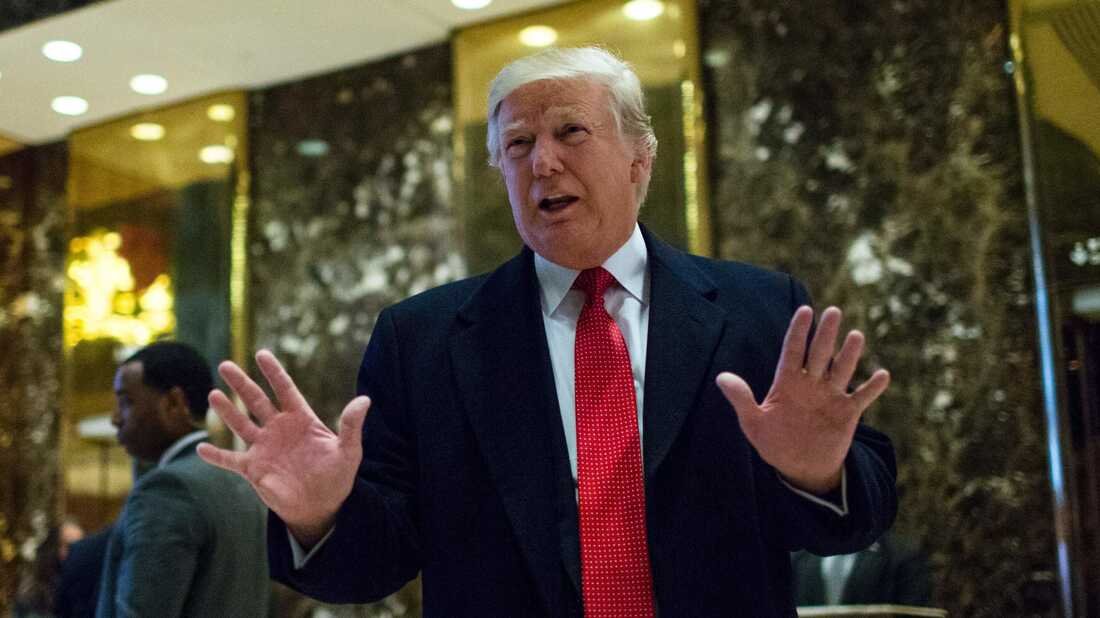
Donald Trump: A Masterclass in Deception and Defiance
Posted in :
Despite plummeting approval ratings, Donald Trump continues to mislead the public, demonstrating a pattern of deception that goes hand-in-hand with his legislative approach.
The alarming consistency of Donald Trump’s behavior, particularly his tendency to lie and double down when caught. It highlights recent polling data and contrasts it with his claims, showcasing the disconnect between his statements and public perception.
In the ever-evolving landscape of American politics, few figures are as polarizing as Donald Trump. A man who has carved out both notoriety and a steadfast following, Trump’s approach often feels like a lesson in the art of deception. Take, for example, the latest polling data revealing that his approval ratings have reached historic lows just 100 days into his presidency. It raises a pressing question: how does a leader navigate such a precarious situation? With bravado and bluster, of course. This blog post takes a closer look at Trump’s propensity for lying and his audacious responses to criticism, framed by an alarming new report about his slipping popularity.
The Unraveling of Trump’s Approval Rating
Recent polling data reveals a troubling trend for former President Donald Trump. According to the latest ABC News Ipsos poll, his approval rating has plummeted to a staggering 39%. This figure marks the lowest approval rating for any president within their first 100 days in office in the past 80 years. What does this mean for Trump and his administration?
Exploration of the Recent ABC News Ipsos Poll Results
The ABC News Ipsos poll paints a bleak picture for Trump. Only 39% of Americans approve of his job performance. This is not just a number; it reflects a significant shift in public sentiment. The poll indicates that 53% of respondents believe the economy has worsened since Trump took office. Even more alarming, 72% of Americans think that his economic policies are likely to lead to a recession.
These statistics are not just numbers on a page. They represent real concerns from everyday Americans. Many feel that Trump’s policies are not only ineffective but also detrimental to their financial well-being. The public’s perception is clear: they are worried about the direction in which the country is heading.
Historical Context of Approval Ratings for Previous Presidents
To understand the significance of Trump’s approval rating, it’s essential to look at the historical context. Approval ratings have always been a crucial indicator of a president’s standing with the public. For instance, Presidents like Barack Obama and George W. Bush had approval ratings in the 60s during their early days in office. Even Richard Nixon, during the Watergate scandal, had higher ratings than Trump currently does.
Trump’s 39% approval rating is not just low; it is unprecedented. It raises questions about his leadership style and the effectiveness of his policies. How does one recover from such a significant drop? History shows that presidents often adjust their strategies in response to public opinion. However, Trump’s approach has been markedly different.
Comparison of Trump’s Early Presidency to Those of His Predecessors
When comparing Trump’s early presidency to those of his predecessors, the differences are stark. Most presidents use their first 100 days to establish a foundation for their administration. They often focus on unifying the country and addressing pressing issues. Trump, however, has faced a barrage of criticism and skepticism.
His administration’s focus on controversial policies, such as cutting medical research funding and ending birthright citizenship, has not resonated well with the public. Many Americans feel that these initiatives move the country away from its founding principles. As one political analyst noted,
‘It’s a shell game and mirrors, distracting from reality.’
This sentiment captures the essence of public frustration with Trump’s leadership.
Public Sentiment on Economic Policies
Economic policies are often a significant factor in a president’s approval rating. In Trump’s case, the public sentiment is overwhelmingly negative. The poll results indicate that a majority of Americans believe the economy has deteriorated under his leadership. This perception is critical, as economic performance is a key driver of approval ratings.
Trump’s promises of lower taxes and job creation have not convinced many. The skepticism is palpable. With 72% of Americans fearing a recession due to his policies, it is clear that trust in his economic strategy is waning. The public’s concerns are not unfounded; they reflect a broader anxiety about financial stability and future prospects.
As Trump navigates the challenges of his presidency, the low approval rating serves as a stark reminder of the public’s discontent. The ABC News Ipsos poll results highlight a significant disconnect between Trump’s policies and the expectations of the American people. With historical context and comparisons to previous presidents, it becomes evident that Trump’s early presidency is marked by unprecedented challenges.
In a political landscape where approval ratings can make or break a presidency, Trump’s current standing raises critical questions about his future and the direction of his administration. The coming months will be crucial as he attempts to address these concerns and regain the trust of the American public.
The Art of the Deal: Echoes of Deception
Controversy Surrounding ‘The Art of the Deal’
Since its publication in 1987, The Art of the Deal has been a cornerstone of Donald Trump’s public persona. The book, co-written by Tony Schwarz, was marketed as a memoir and a business guide. However, it has also sparked significant controversy. Critics argue that the book presents a distorted view of Trump’s character and business practices.
Many readers have questioned the authenticity of the claims made in the book. Was it truly a reflection of Trump’s business acumen, or was it more of a carefully crafted image? This question looms large, especially as new revelations come to light.
Tony Schwarz’s Revelations
Tony Schwarz, the ghostwriter of The Art of the Deal, has publicly expressed regret about his involvement with the book. In a candid interview, he stated,
‘I wish the book weren’t even in print.’
This admission raises eyebrows. Why would the man who helped shape Trump’s image now disavow it?
Schwarz has described Trump as a man lacking ethics, someone who views others as mere pawns in his game. He has spent years trying to warn the public about Trump’s character. In his words, “I knew this was a bad guy when I did the book.” This statement is striking. It suggests that Schwarz was aware of the potential consequences of his work, yet chose to proceed.
Schwarz’s regret is not just personal; he feels a civic duty to speak out. He believes that Trump’s rise to power poses a significant threat. In fact, he has gone so far as to say that if Trump were to gain access to nuclear codes, it could lead to the end of civilization. Such a statement is alarming and underscores the seriousness of his concerns.
Trump’s Statements and Their Implications
Trump has often touted The Art of the Deal as one of his qualifications for the presidency. He claims to have written the book himself, which Schwarz disputes. This discrepancy raises questions about Trump’s honesty. If he is willing to misrepresent his authorship, what else might he be lying about?
In recent statements, Trump has made bold claims about his economic policies. He has promised lower taxes and job creation, asserting that tariffs will fund these initiatives. However, many Americans are skeptical. Polls indicate that a significant portion of the population believes the economy has worsened under his leadership. This disconnect between Trump’s assertions and public perception is troubling.
Schwarz’s insights into Trump’s character provide a lens through which to view these statements. If Trump has a history of deception, can his promises be trusted? Schwarz’s warnings about Trump’s tendency to double down on lies resonate with many. It raises the question: how can the public hold a leader accountable when they are constantly fed misinformation?
The controversy surrounding The Art of the Deal is not just about a book; it reflects deeper issues of trust and integrity in leadership. Tony Schwarz’s revelations about Trump’s character challenge the narrative that has been built around the book. As the public grapples with these complexities, it becomes increasingly important to scrutinize the statements made by those in power.
In a world where deception can have dire consequences, the echoes of The Art of the Deal serve as a reminder to remain vigilant. The implications of Trump’s words and actions extend far beyond the pages of a book. They shape the very fabric of society and influence the lives of millions.
Doubling Down: Trump’s Strategy to Combat Criticism
Donald Trump’s approach to criticism is as distinctive as it is controversial. When faced with negative feedback, particularly in the form of polls, he often resorts to a strategy that can be described as doubling down. This tactic involves not only deflection but also a refusal to acknowledge any wrongdoing. Instead of correcting the record, he amplifies his claims, regardless of their veracity. As a political commentator aptly noted,
‘Every time he’s caught, he doubles down instead of correcting the record.’
Examples of Trump’s Response to Negative Polls
When polls indicate a decline in public approval, Trump’s reaction is often to dismiss the findings outright. For instance, during his first 100 days in office, a poll revealed that only 39% of Americans approved of his performance. This was the lowest approval rating for any president in the past 80 years. Rather than addressing the concerns raised by the public, Trump chose to focus on promoting his agenda, claiming that the media was biased against him.
In response to these negative polls, Trump has been known to make bold promises. He has claimed that tax cuts and tariffs would lead to economic booms, despite widespread skepticism. His assertion that tariffs would reduce income taxes for many Americans is a prime example of his strategy to shift the narrative. Instead of engaging with the criticism, he attempts to redirect attention to what he perceives as positive outcomes.
Insights into His Communication Style on Social Media
Trump’s communication style, particularly on social media, is another critical aspect of his strategy. He often uses platforms like Truth Social to bypass traditional media channels. This allows him to speak directly to his supporters without the filter of journalistic scrutiny. His posts are typically characterized by a mix of bravado and exaggeration, often lacking factual support.
For example, Trump has claimed that his policies are creating jobs and revitalizing the economy, despite evidence to the contrary. His use of social media serves not only as a means of communication but also as a tool for rallying his base. By framing criticism as an attack from the “fake news” media, he reinforces his supporters’ loyalty and creates a sense of solidarity against perceived adversaries.
Discussion of the Effectiveness of Trump’s Tactics
The effectiveness of Trump’s tactics is a subject of ongoing debate. On one hand, his ability to maintain a loyal base is undeniable. Many of his supporters appreciate his defiance against criticism and view it as a sign of strength. They see him as a leader who stands firm in the face of adversity, which can be appealing in a political landscape often characterized by compromise.
However, this strategy also has its drawbacks. By consistently doubling down on falsehoods, Trump risks alienating moderate voters and those who prioritize truthfulness in leadership. His refusal to accept criticism can lead to a lack of accountability, which is troubling for many Americans. The psychology behind this behavior raises questions about the nature of leadership and the responsibilities that come with it.
Trump’s approach to negative feedback often involves an aggressive disregard for truth. This tactic can amplify falsehoods, creating a distorted narrative that may resonate with his base but fails to address the concerns of the broader public. As he continues to navigate the political landscape, the long-term effectiveness of this strategy remains uncertain.
Donald Trump’s strategy of doubling down in the face of criticism is a defining characteristic of his leadership style. By deflecting blame and amplifying his claims through social media, he has managed to maintain a loyal following. However, this approach raises significant questions about accountability and the role of truth in politics. As the political landscape evolves, it will be interesting to see how these tactics play out in the long run. Will they continue to serve him well, or will they ultimately lead to his downfall? Only time will tell.
TL;DR: Despite plummeting approval ratings, Donald Trump continues to mislead the public, demonstrating a pattern of deception that goes hand-in-hand with his legislative approach.
TrumpApprovalRatings, DonaldTrumpLies, PoliticalDeception, TrumpEconomyPolicies, TonySchwarz, ArtOfTheDeal,Donald Trump approval rating, Trump deception, Trump lying patterns, political misinformation, Trump’s communication strategy, Trump’s false claims, presidential approval history
#DonaldTrump, #PoliticalDeception, #ApprovalRatings, #Misinformation, #FakeNews, #LeadershipCrisis, #PresidentialPolitics,#PoliticalDeception, #DonaldTrumpLies, #ArtOfTheDeal, #TrumpEconomyPolicies, #TrumpApprovalRatings, #TonySchwarz

